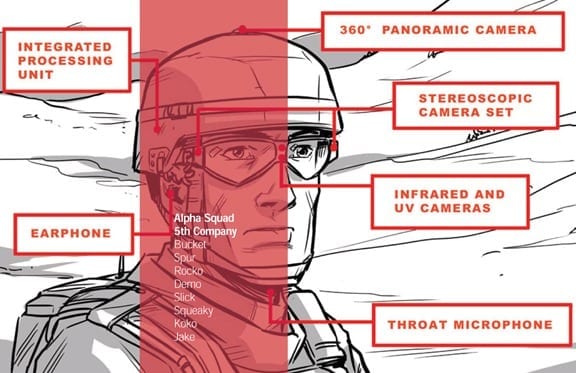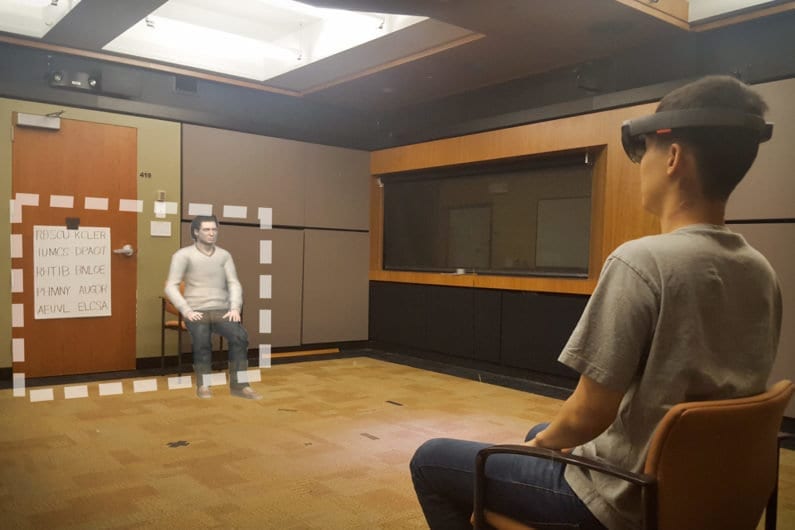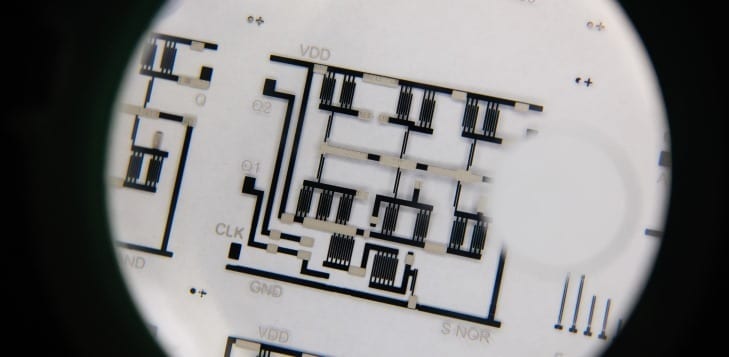
Marines tested an augmented reality system from the Office of Naval Research (ONR) last week that could revolutionize the way they prepare for battle, allowing them to transform any location into a dynamic training ground.
The Nov. 6 demonstration, held outdoors at Lejeune Field at Marine Corps Base Quantico in Virginia, was an opportunity for ONR to showcase progress with the Augmented Immersive Team Trainer (AITT). The program brings simulation-based training to Marines in the field so they can train anywhere. The system works by injecting virtual images—indirect-fire effects, aircraft, vehicles, simulated people, etc.—onto a real-world view of one’s surroundings.
“Instead of going out to an old, stale range that has the same targets that people have been shooting at for the last 40 years, AITT provides a target-rich and dynamic environment for training without having to rely on external resources,” said Marine Corps Capt. Jack Holloway, a Marine assigned to ONR’s Expeditionary Maneuver Warfare and Combating Terrorism Department.
“This is true augmented reality: the system knows where you are in the real world and is able to accurately place other objects in that environment and keep them there, which has been a major challenge for other systems,” said ONR program manager Dr. Peter Squire. “The sky’s the limit in terms of the types of training scenarios you could create—whatever you can dream up, you can now run out in a real environment.”
In the past year, the system, now in its fourth year of development, has gone from working in a fixed position to being mobile. In the program’s next and final phase, the goal is to improve AITT incrementally and to move from a video see-through display—in which users view the world through a head-mounted video camera—to an optical see-through display, which would show images directly on the glass of a visor or eyewear. The video display works well when the user is stationary or moving slowly, but an optical see-through approach will enable greater mobility. ONR plans to take advantage of Small Business Innovation Research and Small Business Technology Transfer efforts in wide-field-of-view optical see-through head-worn displays to take augmented reality to the next level. The best available head-worn display will be selected in the near future.
“Whereas Google Glass or other systems are just head-worn displays that place a static image in the wearer’s field of view, our augmented reality system allows users to put a virtual object in a specific location in a person’s natural field of view,” Squire said.
The Latest on: Augmented Reality
[google_news title=”” keyword=”Augmented Reality” num_posts=”10″ blurb_length=”0″ show_thumb=”left”]
via Google News
The Latest on: Augmented Reality
- Virtual reality could make seeing your favorite band less expensive, if these artists have their wayon April 27, 2024 at 6:06 am
Heavy-metal band Avenged Sevenfold and rapper T-Pain are among a growing number of artists who are using virtual reality to connect with their fans at a ...
- Augmented reality creation platform Trace launches with $2Mon April 25, 2024 at 10:09 am
Trace, a location-based augmented reality creation platform, today announced its launch with $2 million in funds led by Rev1 Ventures and Impellent Ventures to make it simple for businesses to bring ...
- Swave Photonics debuts Holographic eXtended Reality display with tiny-pixel technologyon April 25, 2024 at 6:00 am
Holographic display startup Swave Photonics today announced the development of what is claimed to be the world’s first 3D holographic display technology for compact extended reality form factors such ...
- Amare takes flight: Brussels Airlines and Tomorrowland unveil augmented reality livery on new Airbus A320neo0on April 25, 2024 at 5:52 am
Brussels Airlines and Tomorrowland debut "Amare," a new Belgian Icon symbolising unity and the fusion of the music festival and airline brands. The Airbus ...
- Doctors use augmented reality in knee replacement surgery. How is it done?on April 24, 2024 at 10:49 pm
A 70-year-old undergoes India's first Kinematic Bilateral Total Knee Replacement surgery using Augmented Reality (AR).
- A New Augmented Reality Project Restores the Third Ward’s Historic ‘Ghost’ Signson April 24, 2024 at 1:15 pm
Augmented History’ – created by Hoffman York – digitally recreates the fading signs on the side of buildings – and you can see them through your phone.
- Can Augmented Reality Be the Future of Cybersecurity?on April 24, 2024 at 3:32 am
The post Can Augmented Reality Be the Future of Cybersecurity? first appeared on IT News Africa | Business Technology, Telecoms and Startup News.
- Virtual Reality Newson April 20, 2024 at 5:00 pm
360-Degree Head-Up Display View Could Warn Drivers of Road Obstacles in Real Time Dec. 21, 2023 — Researchers have developed an augmented reality head-up display that could improve road safety ...
- Augmented Reality Revolutionizing Remote Supporton April 19, 2024 at 4:43 am
Augmented Reality (AR) is transforming remote support and specialized fields in the business world, driving efficiency, collaboration, and innovation. Explore the projected growth of India's AR and VR ...
- Is Augmented Reality Set to Transform Card Games?on April 15, 2024 at 9:05 pm
With major advances in AR over the last few years, it looks set to be mainstream before 2030. This could be a game-changer for card games, which would benefit greatly from new AR elements. These could ...
via Bing News










